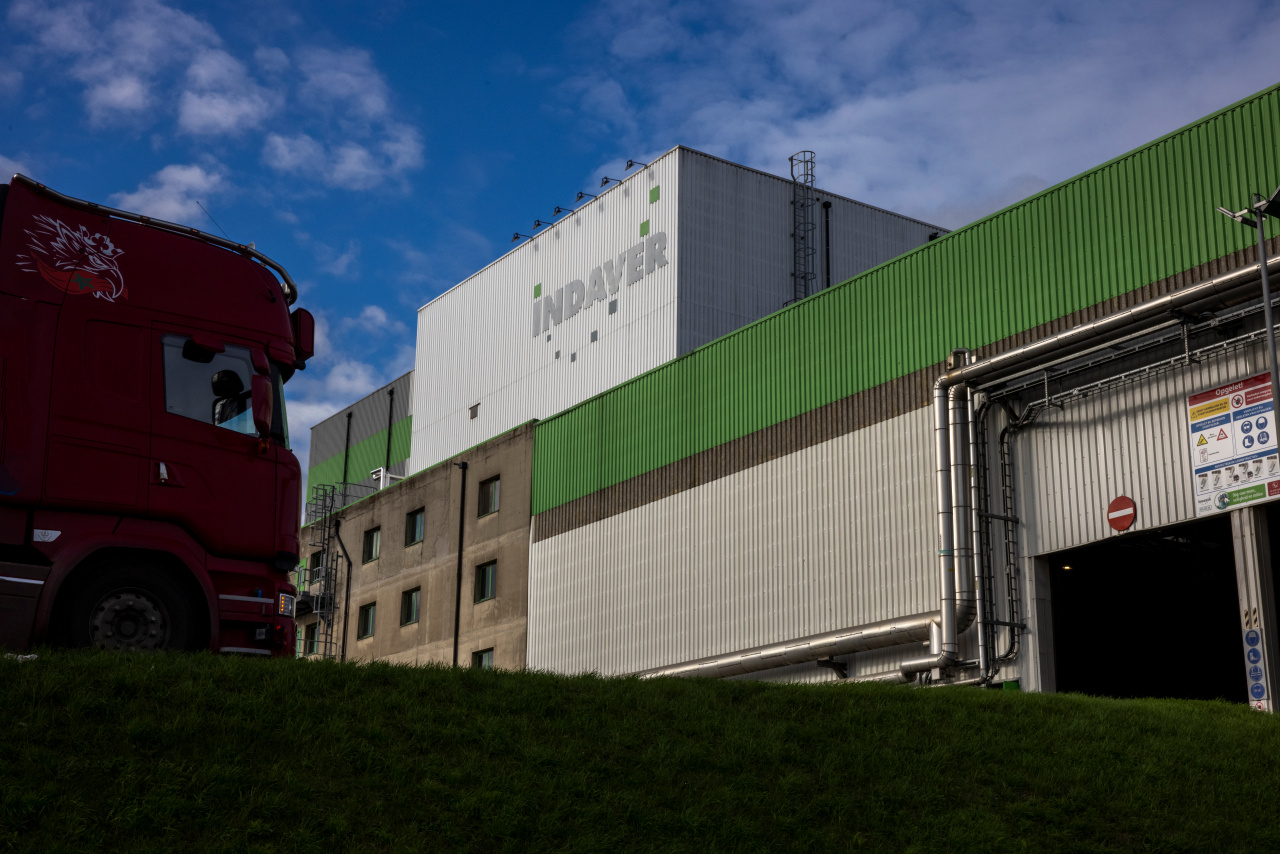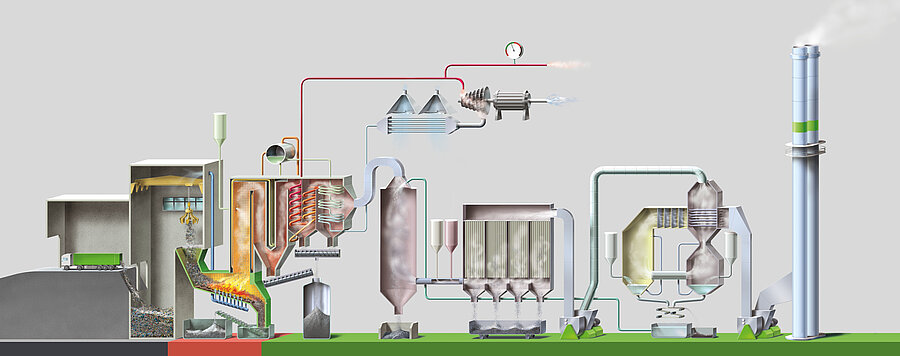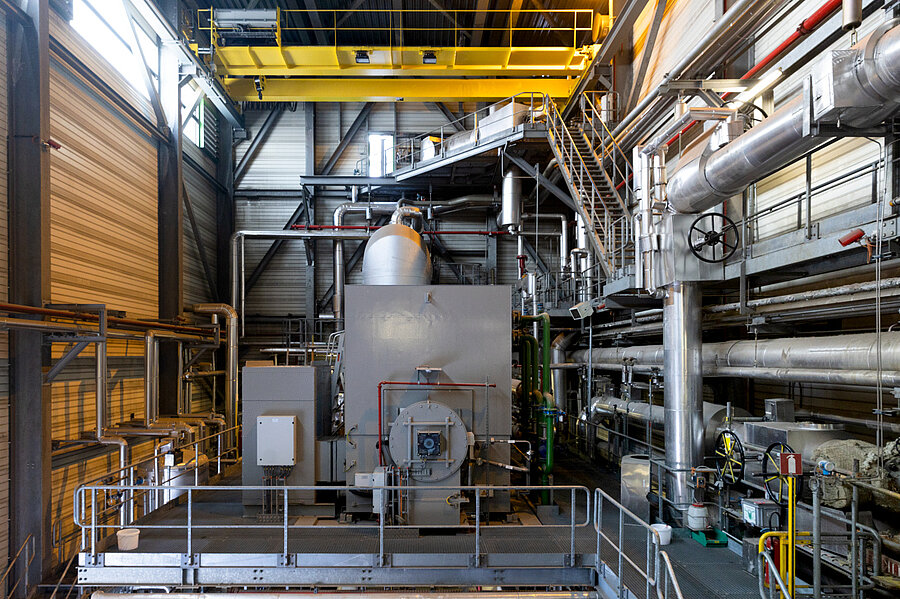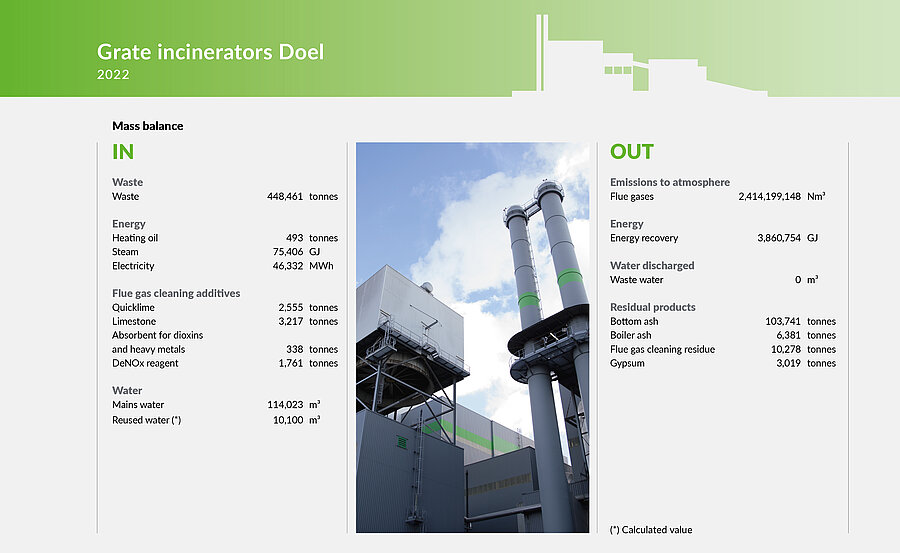Grate incinerators
Grate incinerators: thermal treatment with energy recovery
Non-recyclable fractions of non-hazardous household waste and commercial waste are thermally treated in the grate incinerators. The energy from the incineration is converted into steam and electricity for use by Indaver and third parties. In our ash-treatment installation, we recover various fractions from bottom ashes for useful applications.
Delivery
Trucks supply the waste in bulk. They bring the waste to the covered waste acceptance hall and unload via one of the seven deposit openings into the bunker. The waste bunker and waste acceptance hall are permanently at underpressure; the exhausted air is used as incineration air for the installations.


Reduction
Large-sized waste, such as furniture or mattresses, first goes to the bulk waste shredder, which can be fed from both the deposit hall and from the bunker. The shredded product ends up in the bunker.
Incineration
A crane distributes the waste evenly throughout the bunker and fills the feeding chutes (hoppers) located on a higher level in the bunker. The waste is incinerated in the thermal core of the installation – with the addition of oxygen – on a slanted grate at temperatures between 850°C and 1,000°C. Pushing and dosing tables ensure that the waste is spread evenly on the incineration grates so that the incineration is well controlled.


Energy recovery
The energy from the hot flue gases is recovered in the steam boiler and the steam condensate network. The steam boiler consists of a number of water-filled pipes. The hot flue gases are led through the steam boiler and heat the boiler water, converting it into steam.
The steam is primarily supplied directly to neighbouring companies in the port of Waaslandhaven (Port of Antwerp-Bruges, left bank of river Scheldt) via steam network ECLUSE. These companies tap into the steam according to their own needs. Any steam not drawn upon is routed to a steam turbine that produces electricity. This is supplied to the public grid. Indaver recovers around 80 % of the energy content of the residual waste incinerated in the grate incinerators in the form of useful energy.
Extensive flue gas cleaning
The flue gas cleaning consists of a semi-wet and a wet flue gas treatment. In the semi-wet flue gas cleaning, the flue gases are cooled in the spray dryer to 160°C using water from the subsequent wet flue gas cleaning. As the flue gas flows through the baghouse filter, salts and dust are removed. Dioxins and heavy metals are adsorbed in the pores of the active carbon, which, similarly to the salts and dust particles, are caught in the baghouse filter.
In the wet washing the flue gases are cooled down to around 60°C and by means of sprinkling at various levels the gases are washed intensively. By adding auxiliary materials (lime and limestone) the pollutants are converted into non-hazardous residual products, such as gypsum. As the water from the wet scrubbers is reused in the semi-wet flue gas cleaning, the plant does not generate any waste water. Therefore, no water is discharged.
Valuable raw materials
The bottom ash from the grate furnace incinerators in Doel goes to a separate ash treatment plant.


